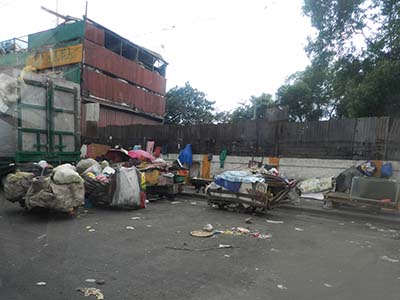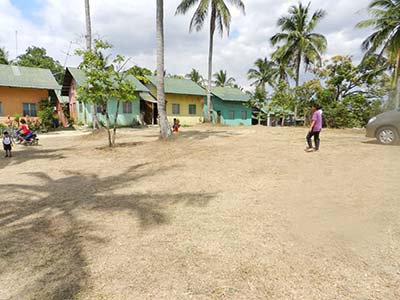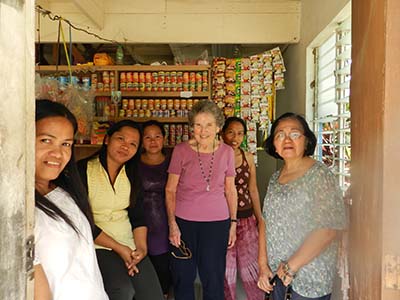Post by Rosemary Sarri.
This post was written by Center for Political Studies, School of Social Work and Women’s Studies Professor Emerita Rosemary Sarri, after her visit to the Philippines in the spring of 2014.
Manila slum from a car window
The island country of the Philippines is the 12th most populous country in the world with a growth rate of 1.89% per year. The population skyrocketed from just 26,272,000 people in 1960 to 98,734,000 people in 2014, a growth rate of 254%. Tremendous cost has accompanied this explosive growth. Most of the population live below the poverty line and reside in urban or metropolitan areas which are extremely crowded. The slums of Manila have become almost inhuman places in which to reside. Because the land prevents the creation of a subway system, the country primarily relies on motor vehicles for transportation, creating terrible pollution that tripled in recent years.
Recently, some local non-profit organizations have organized efforts to foster community development. One of these organizations is Gawad Kalinga, established by a small group of benefactors to work with the people of the slums to provide them with land, food, and housing.
I visited one of their projects in Cavite Province, located a short distance from Manila. They emphasize the restoration of community empowerment and training for gainful employment and active citizenship. Gawad Kalinga gives priority to dismantling the pattern of despair and abandonment that overwhelms the lives of the very impoverished.
Gawad Kalinga believes moving people out of the slums is essential to eradicating poverty. The project that I visited in Cavite provides brightly painted single or duplex housing for about 45 families with a community center, health center, an informal education center and a grocery store. The residents learn to care for their own facilities. Overall the community survey indicated that they received good health care and education for their children. Employment of the men in nearby communities is strongly encouraged, but many, especially women, wanted more assistance in obtaining employment.
Buildings of Gawad Kalinga
While Gawad Kalinga is making strides in the right direction, birth control and family planning are issues that probably deserve more attention. Families in the community have a median of three children. And over-population is a country-wide problem. The strong influence of the Catholic Church since its colonization by Spain resulted in strong opposition to most methods of contraception or birth control. In 2012, this influence started to wane as the government began to address over-population with the passage of the Responsible Parenthood and Reproductive Health Act. Yet, a recent community survey by the Philippine School of Social Work at The Philippine Women’s University indicates that 69% of Filipinos rely on “natural methods” of family planning or abstinence. Despite a national campaign for vasectomy, few Filipinos opted for the procedure.
Gawad Kalinga embodies the Philippines’ overpopulation problems, both as a solution to the inhuman living conditions of Manila’s slums, a partial answer to unemployment woes, and an underscoring of the country’s population problem.
Sarri with some of the women residents of Gawad Kalinga




